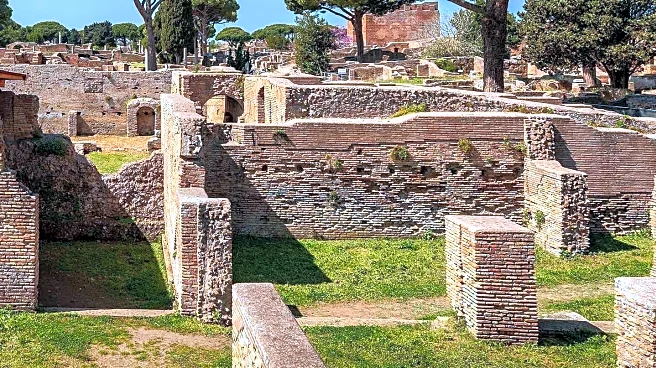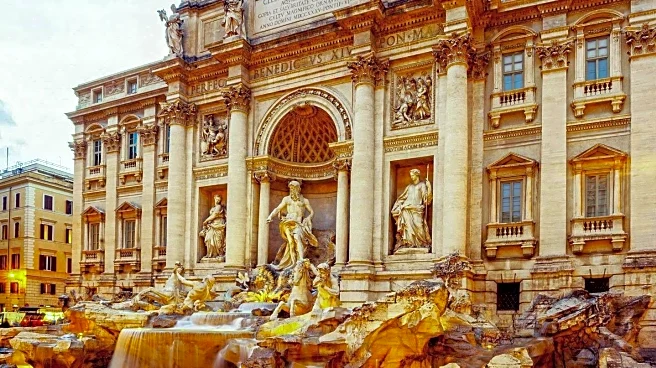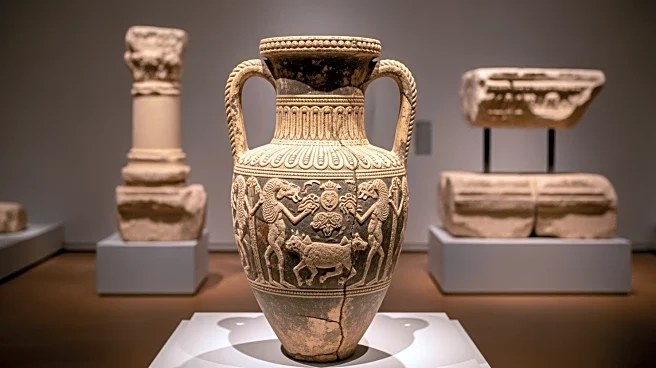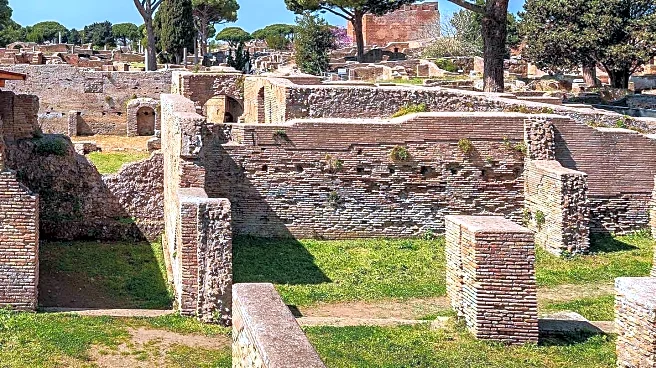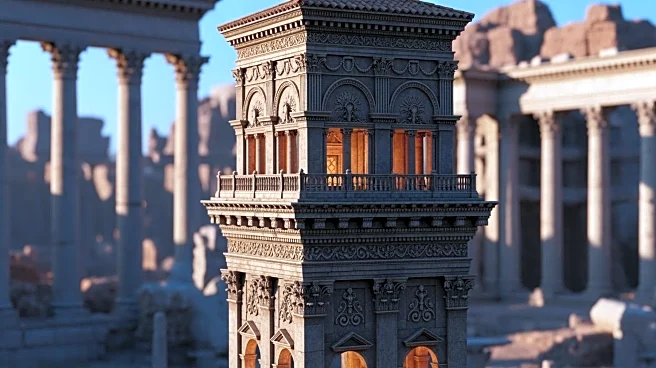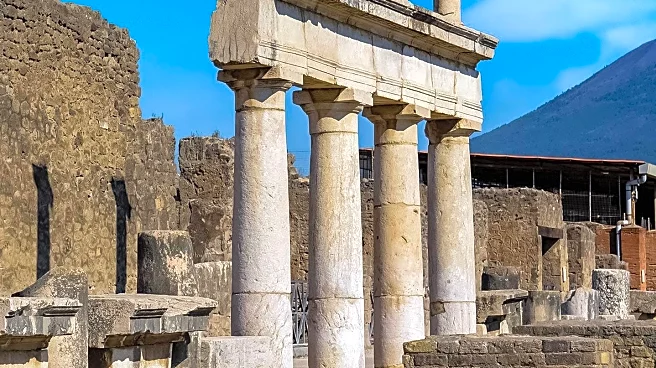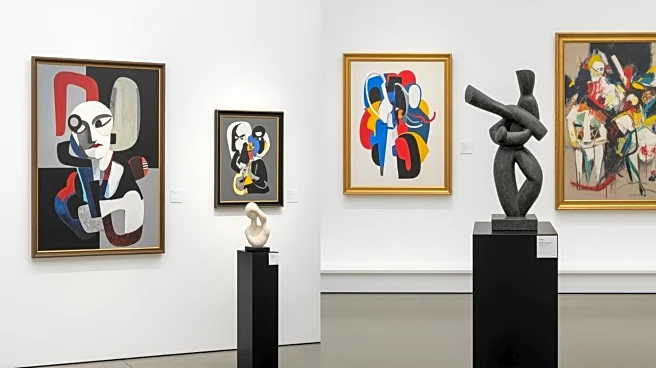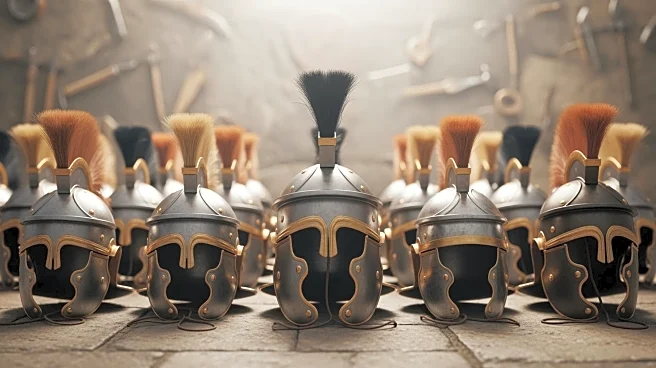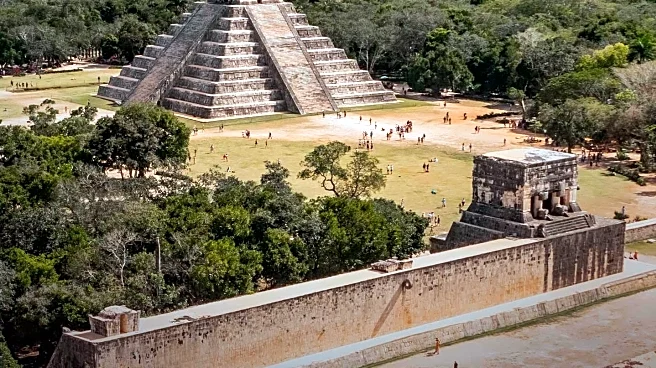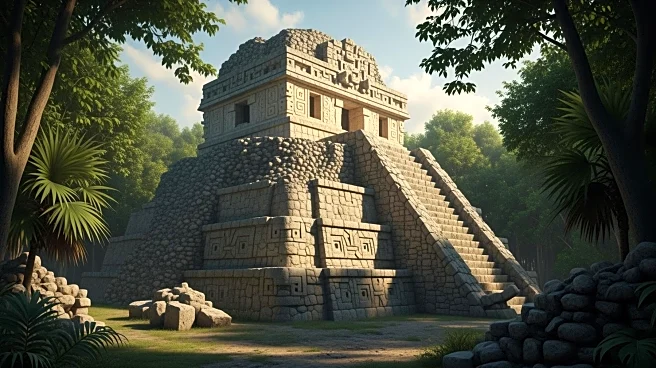What's Happening?
Archaeologists have uncovered a massive stone basin dating back to 250 B.C.E. in the ancient city of Gabii, near Rome. This discovery challenges the traditional narrative of Rome's humble architectural
beginnings, revealing early Roman grandeur influenced by Greek architecture. The basin, carved directly into bedrock, was likely part of Gabii's forum, serving as a monumental pool at the city's main crossroads. The ongoing excavations aim to explore nearby plazas and a potential temple, which could provide insights into ritual artifacts found in the area.
Why It's Important?
The discovery of the basin offers a rare glimpse into early Roman city planning and architectural experimentation. It suggests that Roman builders were influenced by Greek architectural styles well before Rome's conquest of Greece, indicating a more complex cultural exchange. This finding could reshape historical understanding of Roman urban development and its influences, impacting archaeological research and historical narratives. The basin's significance extends to cultural heritage preservation, highlighting the importance of protecting and studying ancient sites to uncover historical truths.
What's Next?
Further excavations are planned to explore the area surrounding the basin, including a large stone-paved area and a potential temple. These efforts may reveal additional artifacts and structures, providing deeper insights into Gabii's historical and cultural context. The site's designation as an archaeological park by Italy's Ministry of Culture ensures continued research and preservation, potentially attracting academic and public interest in Roman history.
Beyond the Headlines
The discovery raises questions about the cultural and architectural exchanges between ancient civilizations, challenging assumptions about Roman and Greek influences. It also highlights the role of archaeology in uncovering hidden aspects of history, emphasizing the need for interdisciplinary approaches to study ancient sites. The findings may inspire discussions on the preservation of cultural heritage and the ethical responsibilities of archaeologists in documenting and interpreting historical artifacts.
